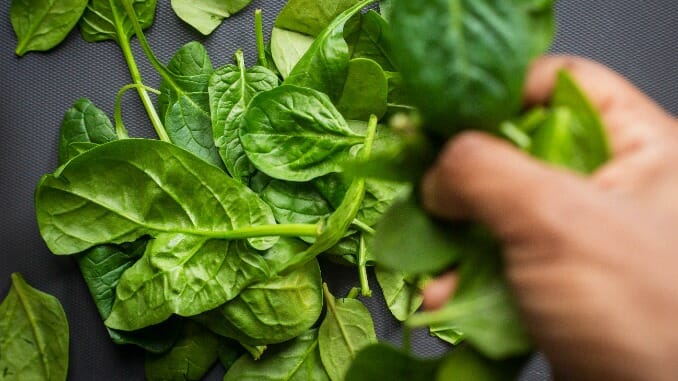Jess Damuck’s ‘Salad Freak’ Is All We’re Cooking From This Summer
Photo by Louis Hansel/Unsplash
Salads have always been my favorite part of a meal. When I was a child, I would invariably leave at least half of my chicken breast or bratwurst untouched, only to be placed in a plastic container until it was finished the next day by another family member. And on more than one occasion, my mom made pasta salad so delicious I physically could not stop myself from eating it until I became so ill I could only stomach a single meal the next day. (I’ve mostly—but not completely—outgrown this habit.)
But as I got older, salads, in my mind, became marred by diet culture. Salad felt mandatory and purely utilitarian: the dish you eat to partially curb your hunger before the “good” part of the meal. Sad, soggy spinach leaves or lackluster iceberg lettuce took center stage. Oil-based dressings were used “in moderation,” which is to say, barely at all. And salad began to feel more like a chore than a treat.
Luckily, Jess Damuck’s new salad cookbook, entitled “Salad Freak,” bows to none of that dogma. It does not ask its reader to count calories or to go easy on the olive oil, to spare the cheese or to take advantage of the multitude of health benefits kale offers. Instead, the recipes in the pages of this book are about eliciting pure, unbridled joy, the kind of excitement that’s often reserved for meat-heavy centerpiece dishes. Colorful, indulgent and yes, healthy, too, these salads are endlessly creative and unapologetically delicious—it feels as if taste and aesthetics are prized far above any arbitrary measurement of healthiness. That’s not to say the recipes aren’t healthy, but nutritional content is not the focus.
A post shared by Jess Damuck (@jessdamuck)
Damuck’s attention to detail is first witnessed in her “note on mindfulness” at the beginning of the book. Her instructions for using the book read, “Take a deep breath before you start chopping. Take another look at the spectacular colorful veins of that Swiss chard before you tear it apart. More than anything, acknowledge that you’re making an effort for yourself and maybe someone else and feel good about that.” It’s about more than salad: It’s about a state of mind.
This framework persists throughout the beginning of the book, where she also includes playlist suggestions. (I knew the book was going to be good when I saw Francis Bebey and Mulatu Astatke listed.) This kind of attention to detail acknowledges that food is about so much more than what we eat—it’s about how we feel. The preparation is just as (if not more) important than the consumption. It’s about enjoyment, and separating that enjoyment from the mukbang-like binge content we’re so used to seeing when we want to “indulge.” Intention takes center stage.
But it’s not just Damuck’s intro that wowed me. The salads themselves are intensely colorful, creative, even ecstatic. The book opens with a citrus and avocado salad dotted with tiny pink radishes, a salad that could brighten even the darkest of winter days. Place this dish on the table next to anything else, and the salad will undoubtedly outshine it. At the same time, it’s about as simple as salad gets. Apart from carefully cutting the citrus and avocado, all you have to do is drizzle some quality olive oil and sprinkle some flaky salt on top, and it’s ready to go.
Another personal favorite is the mandarins and cream, which also appears on the front cover. This recipe challenges the accepted definition of a salad: Can peeled mandarins covered with burrata, olive oil and salt really be called a salad? Apparently so. While this dish could easily get a meal off to a great start, it can also make for a delightful dessert for the ultra-sweet-averse among us.
There are plenty of other gems in this book. (A Caesar salad pizza? Strawberries, rose and sumac? Yes please.) But perhaps my favorite is the pickled blackberry and shallot panzanella with sumac. I’m a big fan of panzanella, which is essentially a bread salad. But I would never, ever think of combining these ingredients together. Pickled shallots and blackberries are truly a heavenly match, and when paired with toasted, dried bread and fresh cherry tomatoes, the end result is truly magical. The sumac sprinkled on top adds a layer of complexity and sophistication I didn’t know was possible to cultivate so easily in a home kitchen.
Damuck has reclaimed salads for those of us who have given up counting calories and calculating macros and instead just want to delight in the fresh colors and flavors every season offers. Stop by my kitchen for a bite this summer, and you’ll undoubtedly find one of these elegant salads taking center stage, the open window letting in a cool breeze, Mulatu Astatke twinkling in the background.